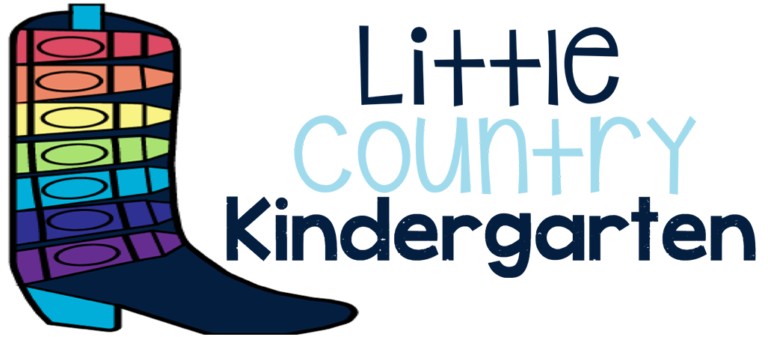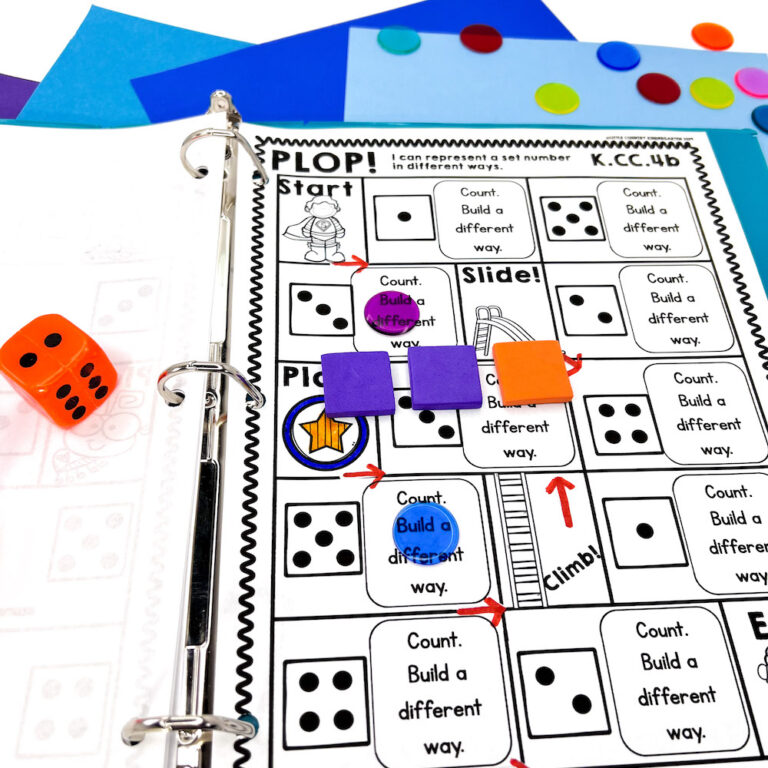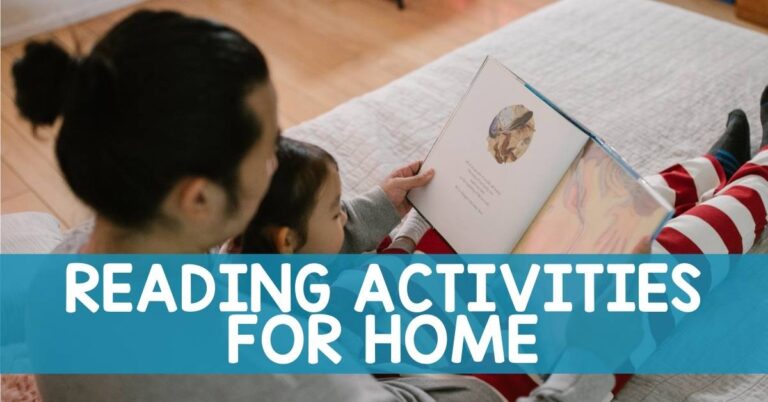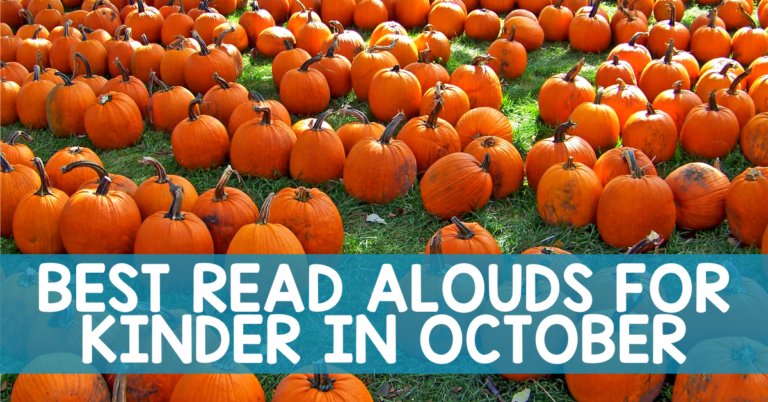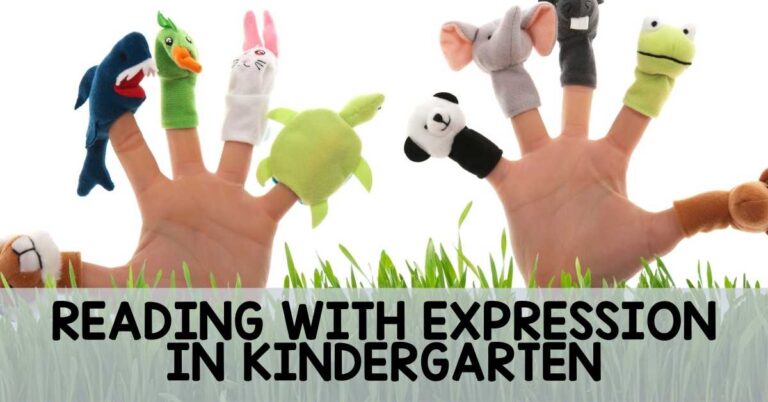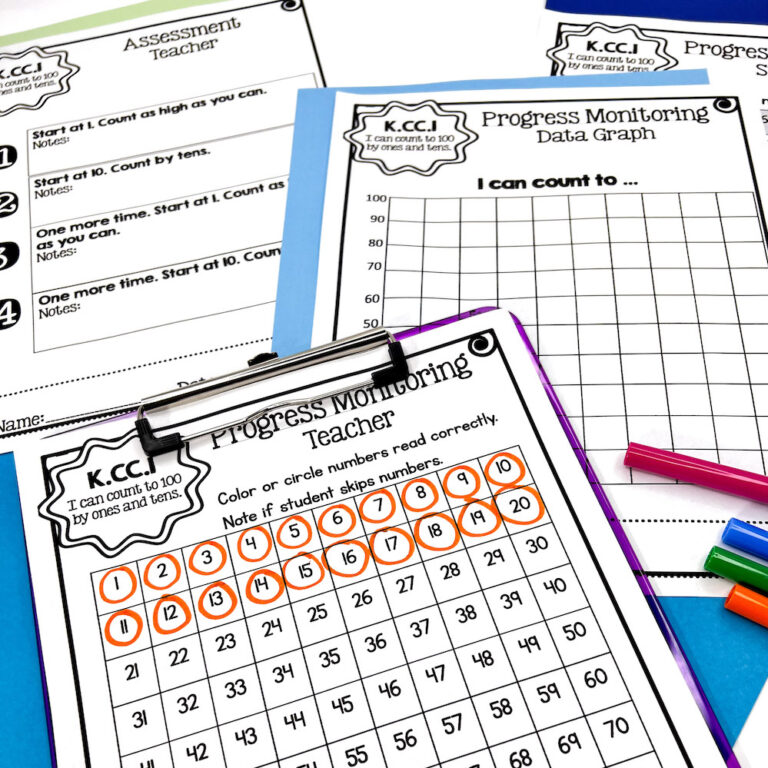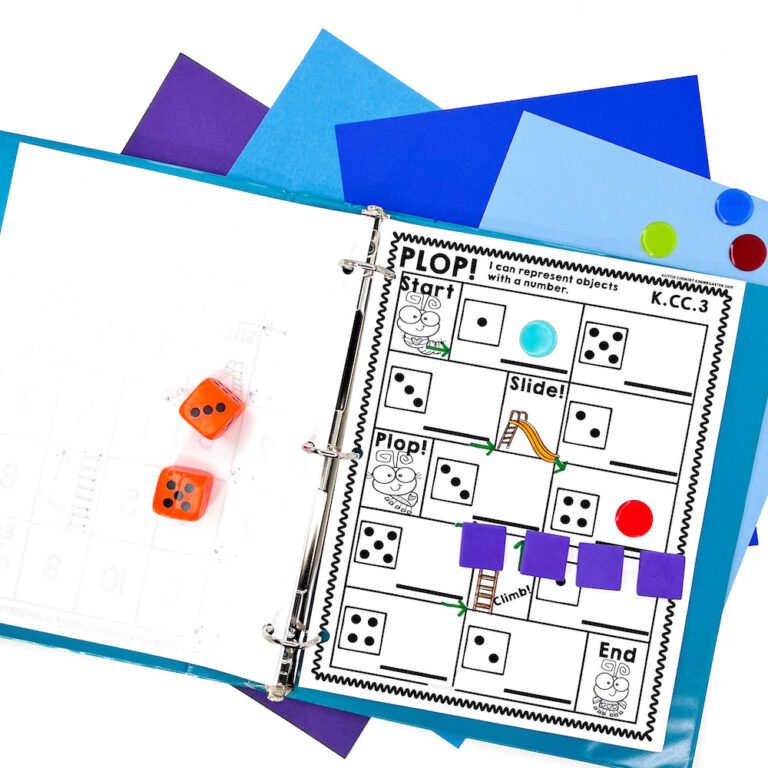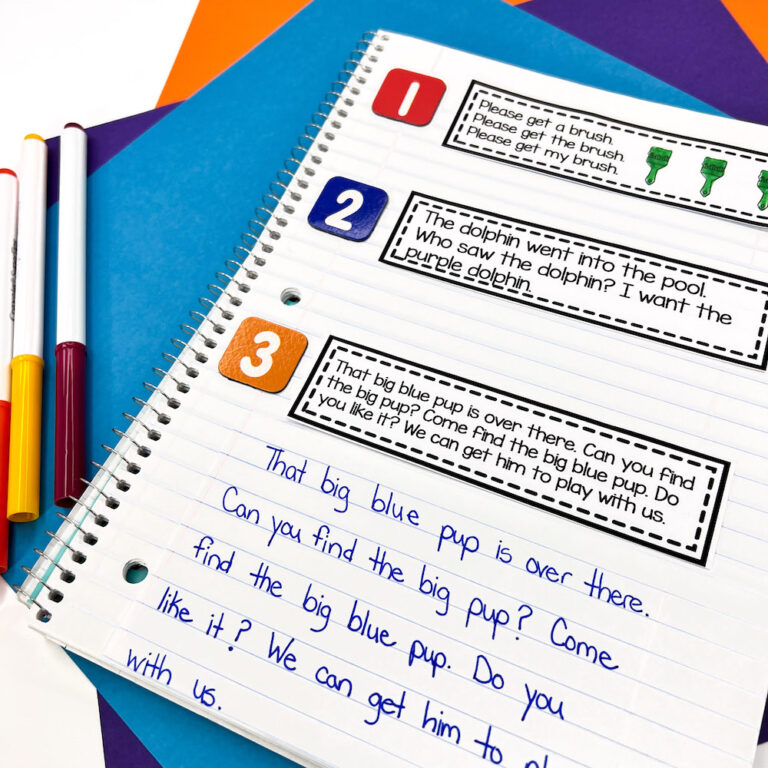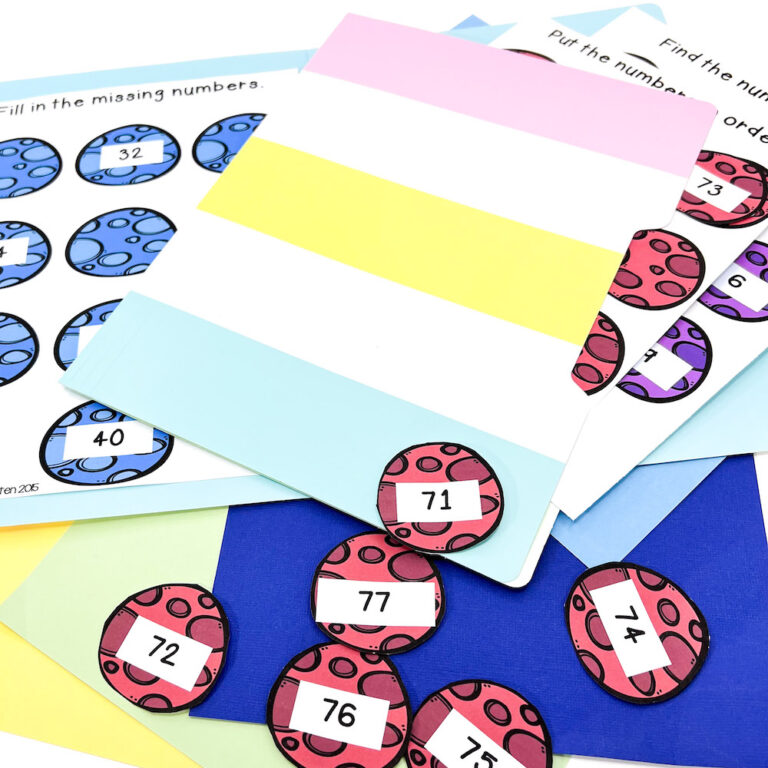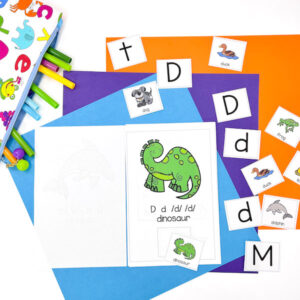Reading comprehension in kindergarten is a huge part of kindergarten reading standards. We start by focusing on listening comprehension as we introduce students to stories and foster that early love of reading. Soon though, after they have mastered letter sounds and started decoding simple stories, we move to focusing on reading comprehension. Although it can seem overwhelming to have to help students learn to both read and understand what they have read, teaching reading comprehension in kindergarten can be fun!
Why Kindergarten Reading Comprehension Matters
Kindergarten reading comprehension means that students aren’t simply memorizing sight words and recalling them, or decoding words correctly without putting any meaning to it. If a student can read a simple story and actually understand what the story is about, then they are able to do more than just simply answer questions about the text.
These students can move towards making connections with the text and themselves and other texts. They can also analyze the story and reflect on different events or problems. Kindergarten reading compression is the foundation for these higher order thinking skills they will need throughout their school years and onward.
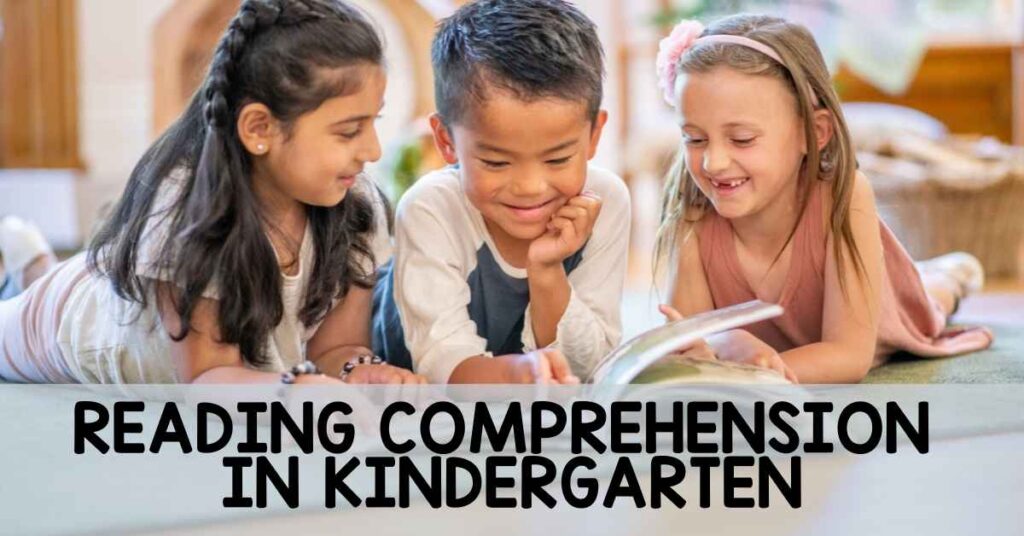
How to Teach Reading Comprehension in Kindergarten
Teaching kindergarten reading comprehension with decodable texts is a first step to help students start off with success. Using texts focusing on already mastered phonics patterns and learned sight words means that student will be able to successfully decode these texts. I like to use phonics fluency to target learned patterns and then ask comprehension questions about these simple passages. Students are more confident going back in the text to look for answers, answering verbally, or even illustrating to show their comprehension when they can more easily decode the text.
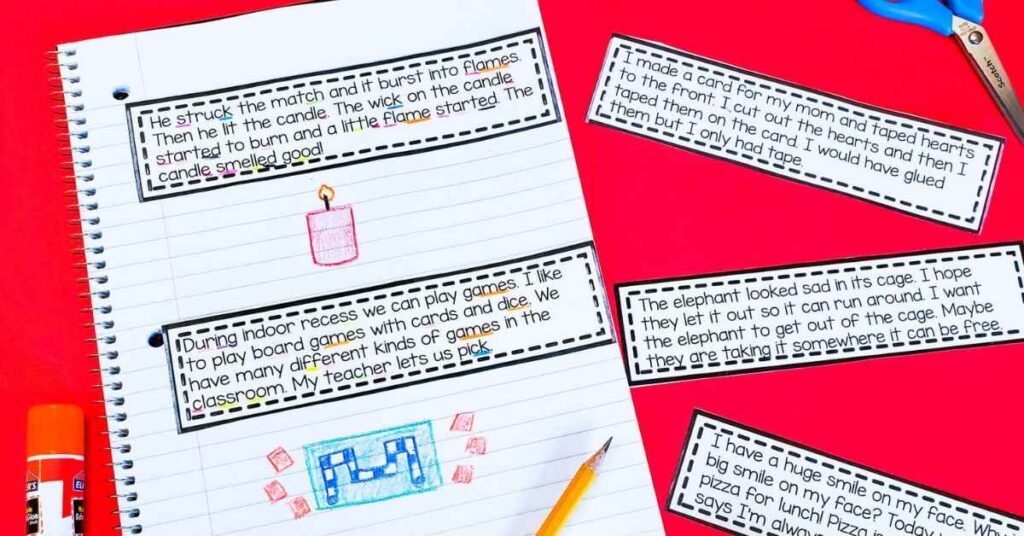
Close Reads
Close reads allow for students to dive deeper into a book since it involves repeated reading of a story throughout the week. Since this comprehension strategy usually focuses on the teacher reading a book instead of the student, it is easier to use texts where students can do more critical thinking. You can choose a text with more challenging vocabulary and focus on analyzing the text such as why the author did certain things or how the characters felt, etc. These are usually great books to ask your students if they have any questions about the text while reading, because they become more confident with the text over the week.
Leveled Questioning
Leveled questioning goes hand in hand with close reading and kindergarten reading comprehension in general. While you still need those basic questions such as who was the character, or what happened at the beginning, planning more challenging questioning can stimulate better conversations and comprehension of the text. I like to use sticky notes to write down my questions ahead of time and place them in my stories, especially my close reads. This allows me to be prepared with questions that go beyond gathering information, and prompt my students to process and apply new information to the story.
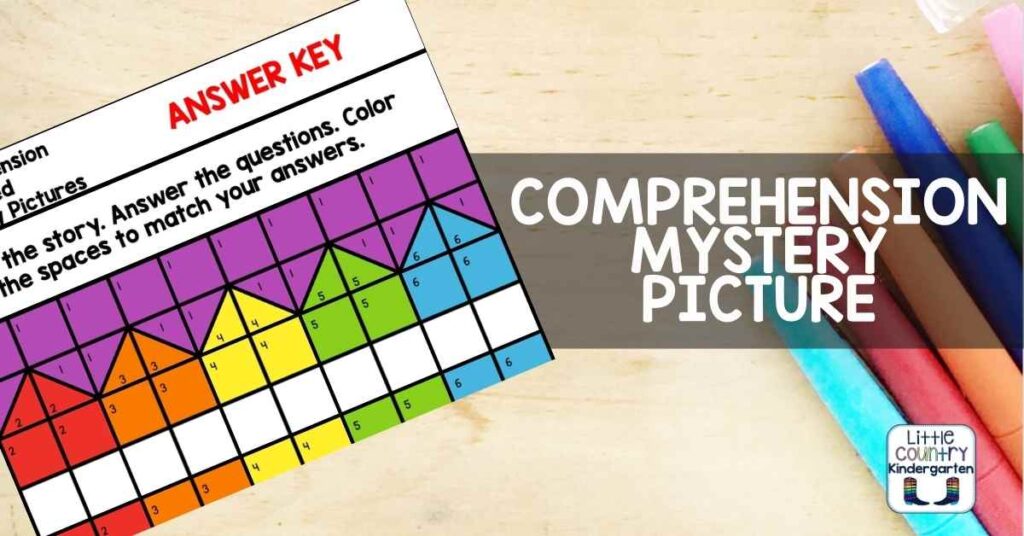
Making Connections
Kindergarten students love to share and so making connections is an easy way to work on comprehension and keep them engaged! When we begin to read a story I often try and invoke prior knowledge before we begin. Asking students if they know anything about the topic or have experienced a similar situation can activate that background knowledge and make them more excited about reading. After reading the story, students can show their comprehension of the text by making further connections either to an experience they have or to another text. Text to text connections is a great way to show that students comprehend the story at hand.
Making Predictions
Predicting is a fun way to get students engaged in the text and analyzing if they are making predictions that make sense. Students can look at the cover of the book and predict what they think it will be about. Mid-reading you can ask them to predict what will happen next after reading a few events. After reading, students could predict what would happen in the next book and this can be a fun activity to do if you are reading a series or doing an author’s study. I like to have my students analyze whether their predictions were correct or not and practice making predictions that make sense.
Vocabulary
Explicit vocabulary instruction is something I value in my classroom. I love to review unfamiliar words before reading and give direct instruction on these vocabulary words. Teaching these words and giving my students resources, such as their own vocabulary anchor charts, helps them better understand what those words mean and aids in their comprehension of the text we are reading. This is especially helpful when we are reading nonfiction texts which can often be harder for my students to process.
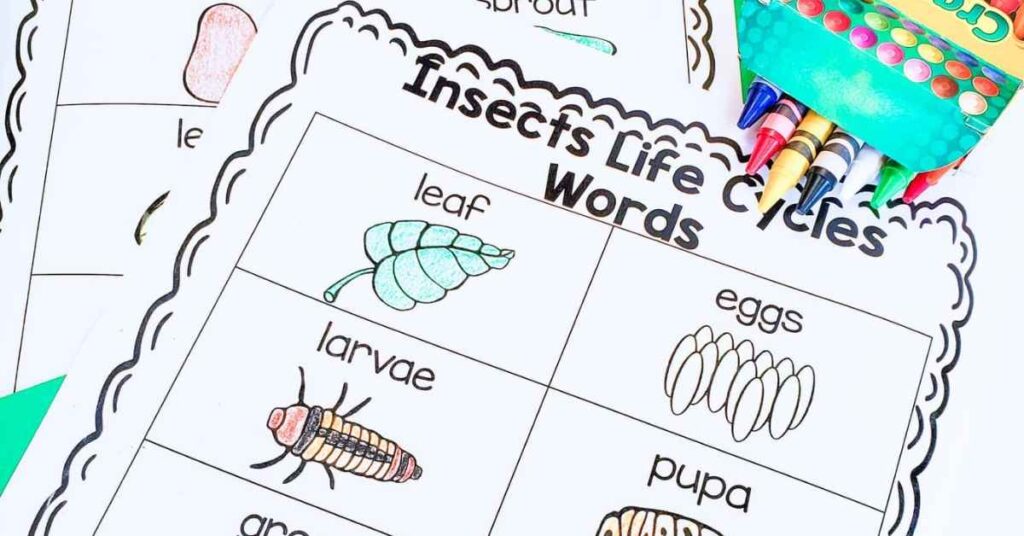
Visualization
One of my favorite strategies to incorporate in my classroom is visualization. I like to tell my students to see a movie in their mind about what they just read. I will prompt them to watch their mind movie after they read a story before they answer any comprehension questions and it helps them pause and retell the story to themselves. Sometimes they illustrate their movie to show the comprehension of a text, such as summarizing the key ideas in one picture, or retelling the main events. I also like to take this further and have them illustrate what they think might happen after the story ends, extending the task and making a higher order challenge.
Manipulatives
I love any chance I get to utilize hands on activities in my classroom. Adapted books come in handy when teaching reading kindergarten reading comprehension in multiple hands on ways. The pieces allow students to match a target vocabulary word on each page, making sure they stay engaged and focused while decoding each part of the story.
There are visual comprehension pages where students read the question and then pick one of two pieces to show the answer. Sometimes I use the printable versions of these comprehension tasks if I need data for IEP progress or interventions. Students can also practice the comprehension skill of retelling a story by using the file folders to put the story in order after reading.
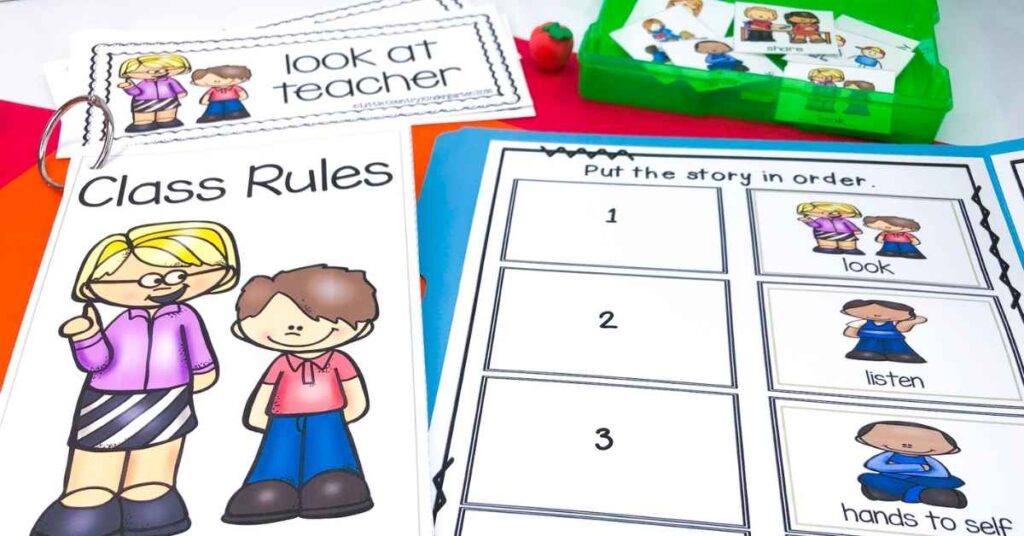
Teaching Kindergarten Reading Comprehension Takeaways
Teaching reading in kindergarten reading comprehension is important to ensure students are actually understanding what they read. A student who can read accurately and fluently but has no comprehension after reading is not going to be getting any knowledge or joy out of reading. We can target this skill in a fun way and help students learn to love reading and all that they can learn from it.
Integrate a Fun Way to Teach Reading Comprehension Today!
With this free kindergarten reading comprehension mystery picture, students will read the passage, answer questions, and then color the picture based on their answers. It is easy for the teacher to see if they are comprehending based on the final picture, and students are engaged in the task to see what mystery picture is revealed.
